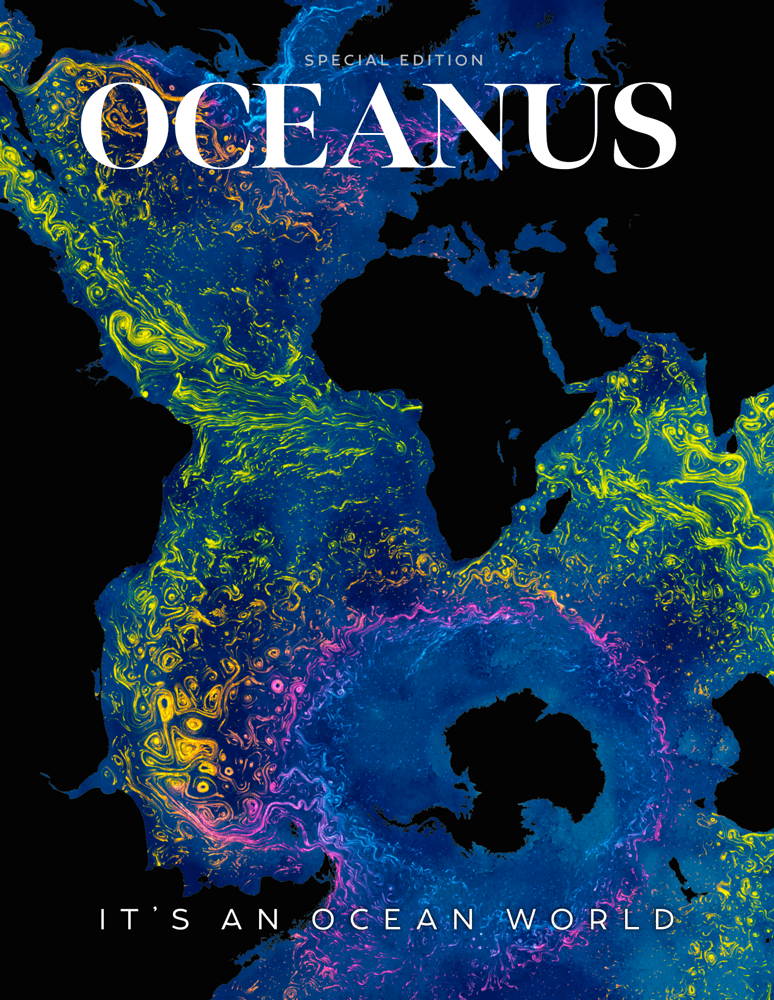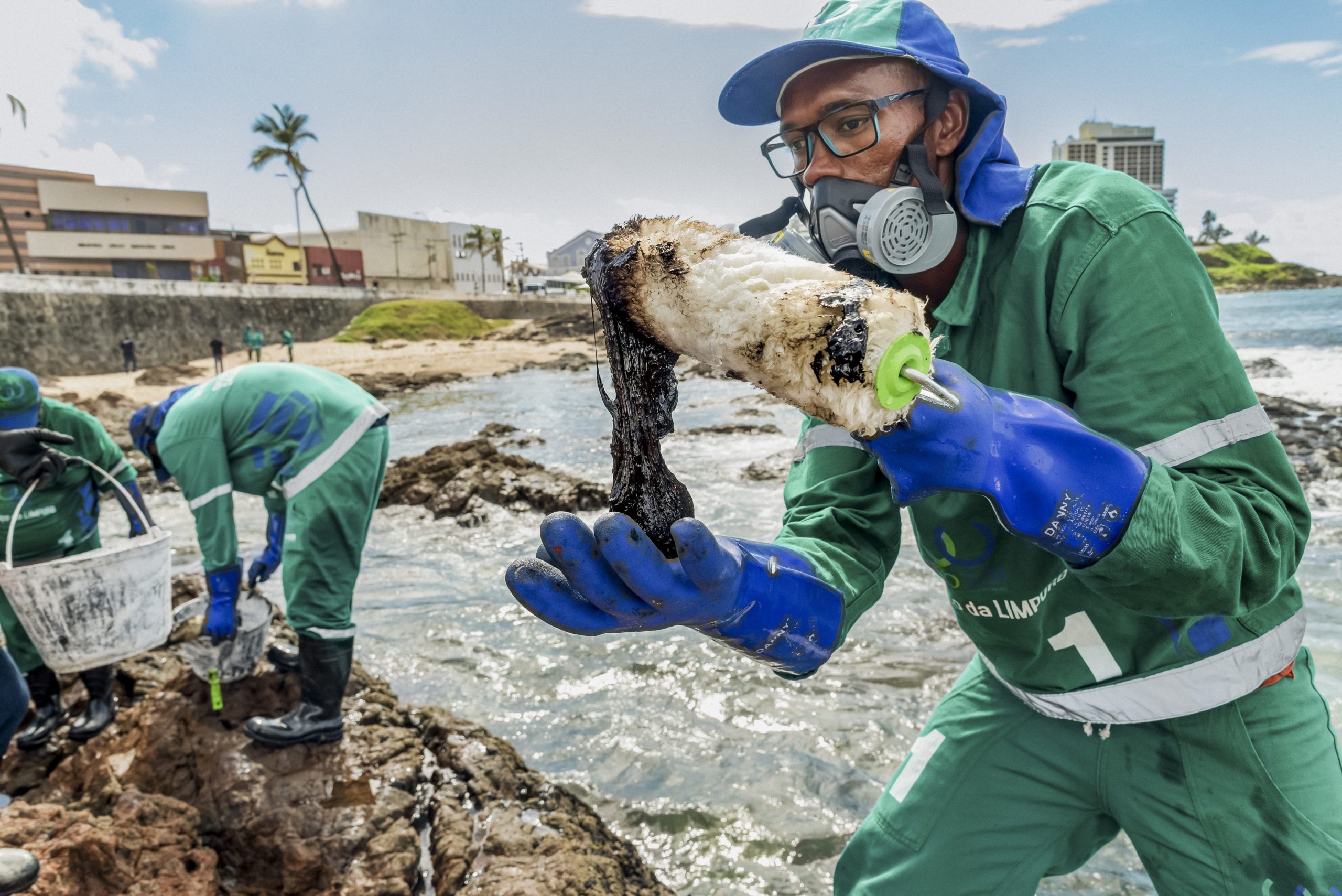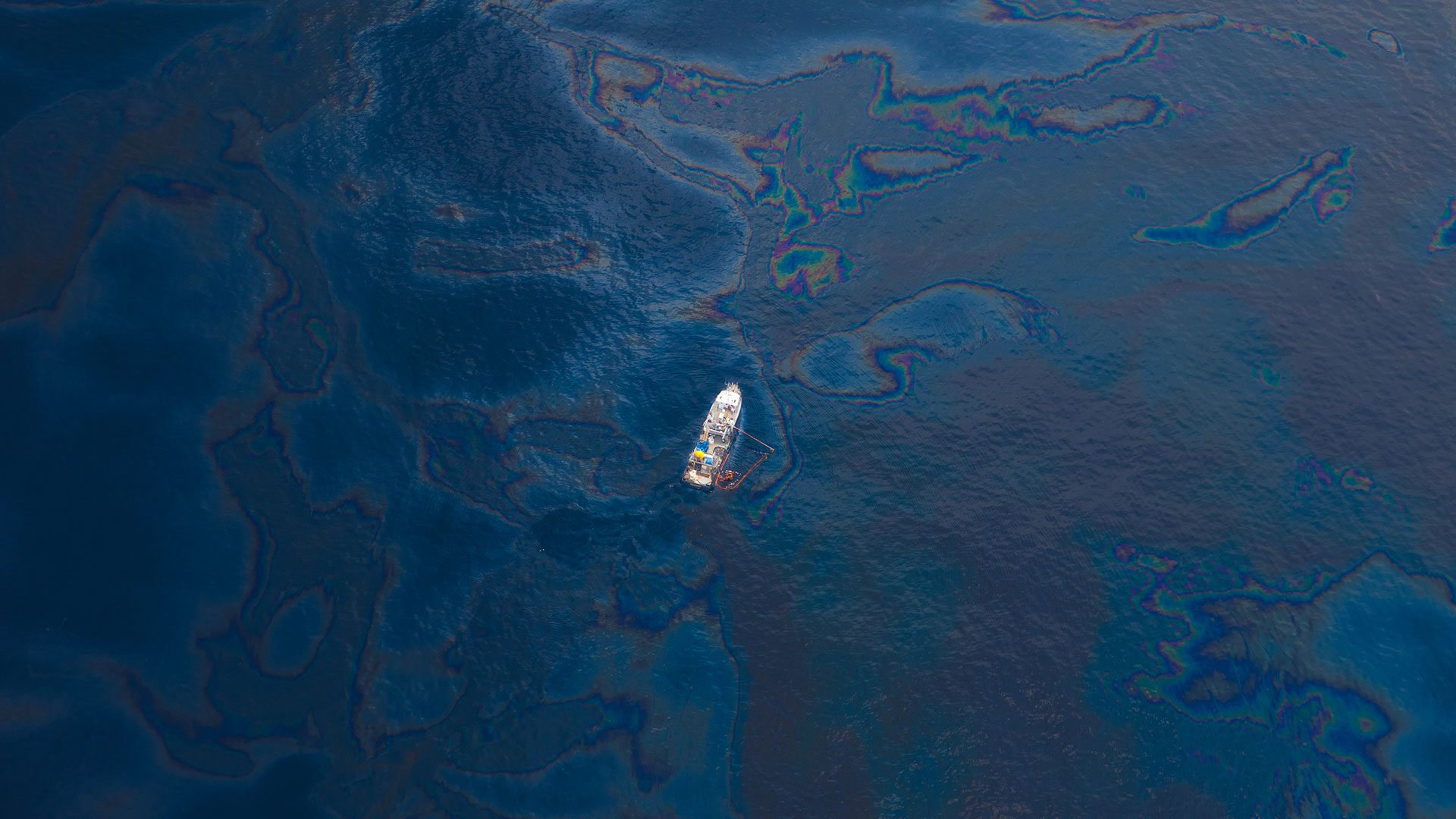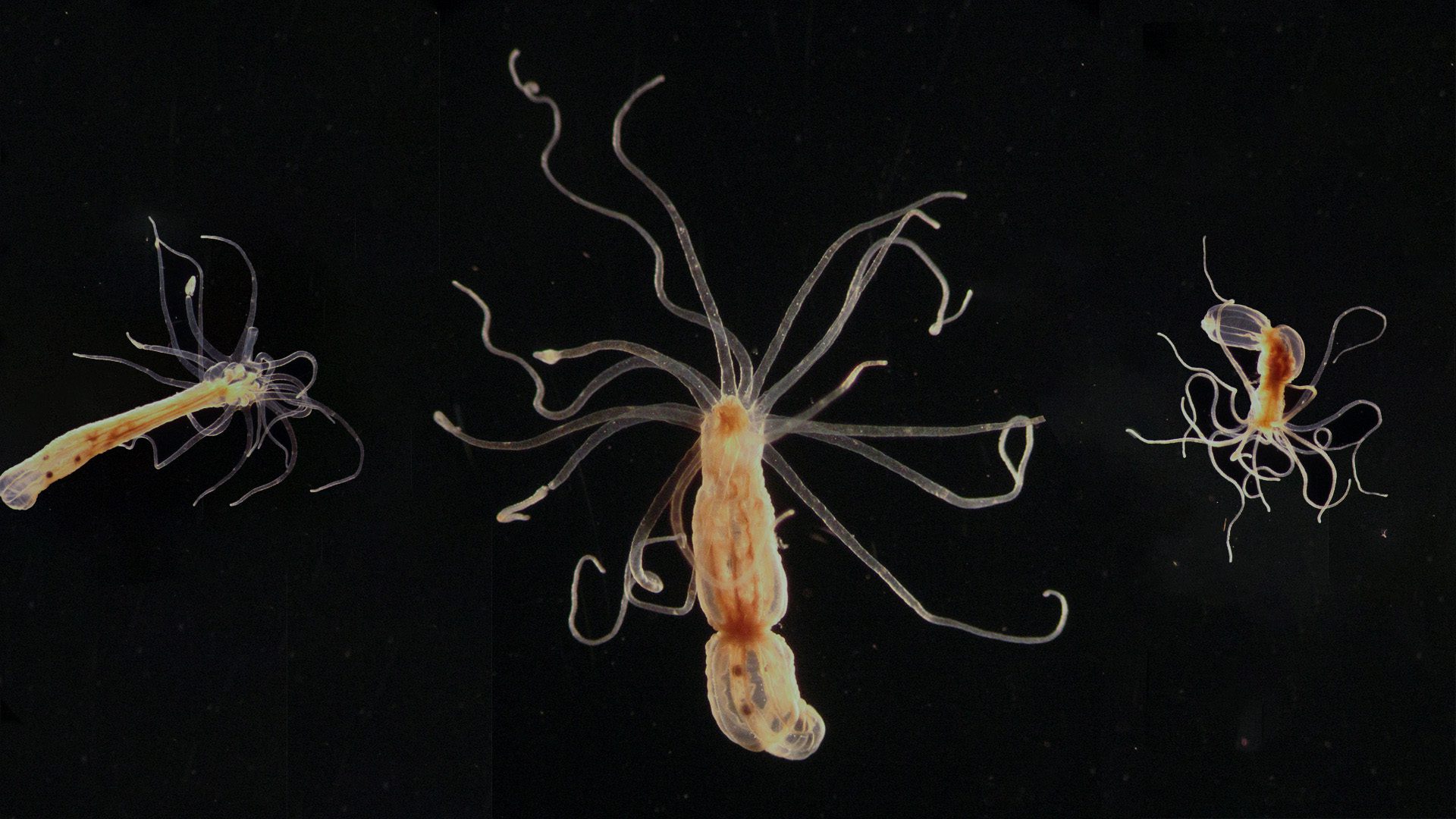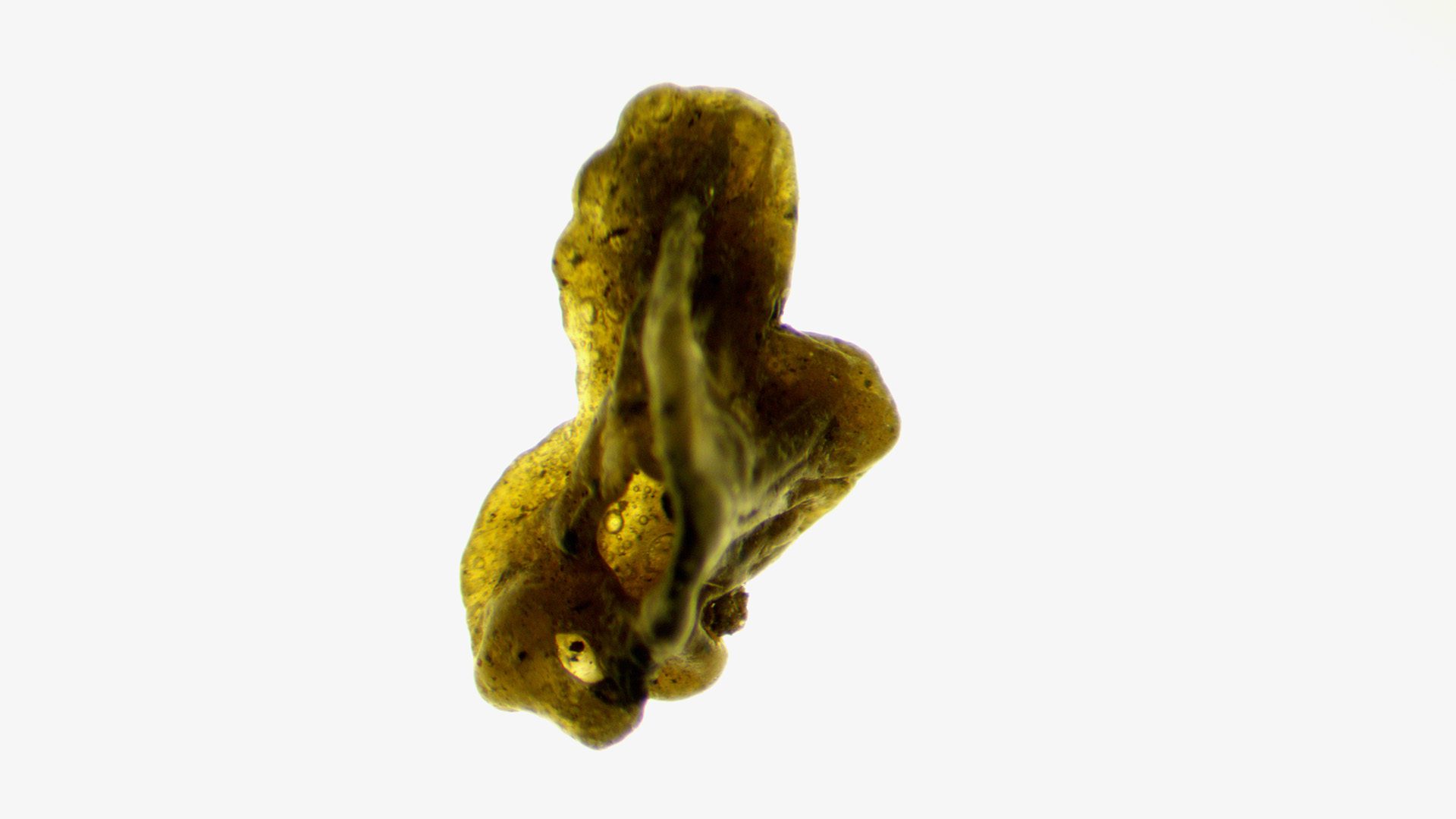
WHOI scientists discuss the chemistry behind Sri Lanka’s flaming plastic spill
Eight months after the M/V X-Press Pearl disaster in Sri Lanka, WHOI investigators talk about their research on the unique chemistry of the spilled plastic nurdles
Estimated reading time: 7 minutes
Eight months ago, the flaming wreck of M/V X-Press Pearl littered the coast of Sri Lanka with waves of burnt and unburnt plastic pellets. Today, the WHOI researchers who helped provide information to responders say the disaster was a unique exercise in international collaboration during plastic spills.
Throughout May and June of 2021, the cargo ship's hull spewed out more than 1680 tons of pre-production plastic pellets, or nurdles, coating 31 miles of Sri Lanka's coastline (and counting) in just a few weeks. Many pellets-burnt, charred, or melted into clumps-began to behave differently on their journey to the coast than they would have unscathed. Seven WHOI scientists collaborated with Sri Lanka's leading marine biologist, Asha de Vos, in assessing the chemistry of these pellets to help responders prepare for the consequences of the spill. For them, the disaster was a scientific hypothetical turned reality.
"Every year you have these nurdles floating all over the world from this chronic, leaky faucet," says WHOI marine chemist Chris Reddy, one of the principal investigators analyzing samples from Sri Lanka. "Obviously, nobody is ever going to dump 50 lbs. of plastic off the coast of Sri Lanka and say, 'Where does it go?' so this unfortunate event was also a lesson in how nature responds to an uninvited guest."
In May, Reddy was contacted about the then-failing cargo ship by former MIT-WHOI Joint Program graduate student, Lihini Aluwihare, now a professor at Scripps Institution of Oceanography. In her correspondence, she expressed growing concern about a potential oil spill from the ship's fuel holds.
"I knew there was no immediate oil spill expertise on the ground in Sri Lanka like what Chris Reddy could offer at WHOI," says Aluwihare, a Sri Lankan native. "I was concerned that Sri Lanka may not have the team to assess the damage done at the time."

The chemical fires from the M/V X-Press Pearl cargo ship were visible from the shores of Sri Lanka. (© iStock.com)
Within days, she connected Reddy and a group of WHOI colleagues to de Vos, who was leading some of the country's clean-up efforts with her non-profit, Oceanswell. Weeks after the ship began to sink, de Vos shipped two packages full of debris from the island's capital of Colombo to Woods Hole. Knowing the exact contents of the spill, she hoped, would provide first responders with more information on how to triage clean-up efforts.
From there, a forensic investigation ensued, as scientists from multiple disciplines began quickly mounting facts about the burnt and unburnt nurdles, which could have intermingled with things like ship fuel and chemicals in the X-Press Pearl's cargo hold, including nitric acid (a corrosive chemical commonly used in fertilizers).
For weeks, Sarah Youngs, a WHOI research assistant under associate scientist Anna Michel, sifted meticulously through the pieces, taking pictures and jotting down their physical characteristics. After codifying some of the burnt and unburnt features, Youngs used a computer program written by MIT-WHOI Joint Program student Beckett Colson to help analyze hundreds of images of nurdles.
"At WHOI I've had a lot of chances to do real-world work, but nothing as time-sensitive as this," says Youngs. "I poured all my efforts into this analysis."
Images from WHOI investigator Anna Michel's lab show the spectrum of pristine and burnt pre-production plastics or nurdles, sampled from beaches in Colombo, Sri Lanka. (Images courtesy of Sarah Youngs, © Woods Hole Oceanographic Institution)
Scores of photos revealed that melted plastic shared a dangerous resemblance to algae-a favorite food of some fish and seabirds. Others helped physical oceanographers predict how these nurdles would travel across the 11-mile stretch between the wreck and the shores of Colombo, where de Vos and many first responders were working. As evidence mounted, a clearer picture of what exactly was mixing in Sri Lanka's waters emerged.
"Those tiny little changes in shape and size were probably enough to cause differences in the nurdles' movement," says WHOI guest investigator Michelle DiBenedetto, an assistant professor at the University of Washington who specializes in the movement of ocean plastics. "This really shows that even small physical differences in a pollutant can really change the way you have to model it."
Based on the team's early analysis, she says, responders could reasonably expect flaky, burnt nurdles to surf onto the beach much sooner, while the remainder of the pristine pellets will slosh in over time.
The sum of this information, communicated in both a WHOI FAQ page and fact sheet just weeks after U.S. scientists connected with de Vos, provided the Sri Lankan government and public with straight-forward facts of what was now in their coastal waters. Later on, it would even be used to address the U.S. State Department and U.S. Embassy in Colombo about the team's findings.
For De Vos these papers represent the culmination of swift international partnership, something she's proud of.
"Building an international collaboration in a time of crisis means that we can work faster to get the answers that are crucial for supporting the recovery efforts," says de Vos in a recent press release. "For me, this is very personal. Sri Lanka is my home, and the ocean is critical to life here and around the world."
WHOI principal investigators say this work may point to a call for more funding that would support future emergency research and response. Some, like Reddy, cite earlier occasions of the institution's direct involvement during large-scale environmental disasters, including the 2010 Deepwater Horizon Oil Spill. Since 2012, there have been at least four similar cargo spills of nurdles, each dumping roughly 25 tons of plastic into the ocean.
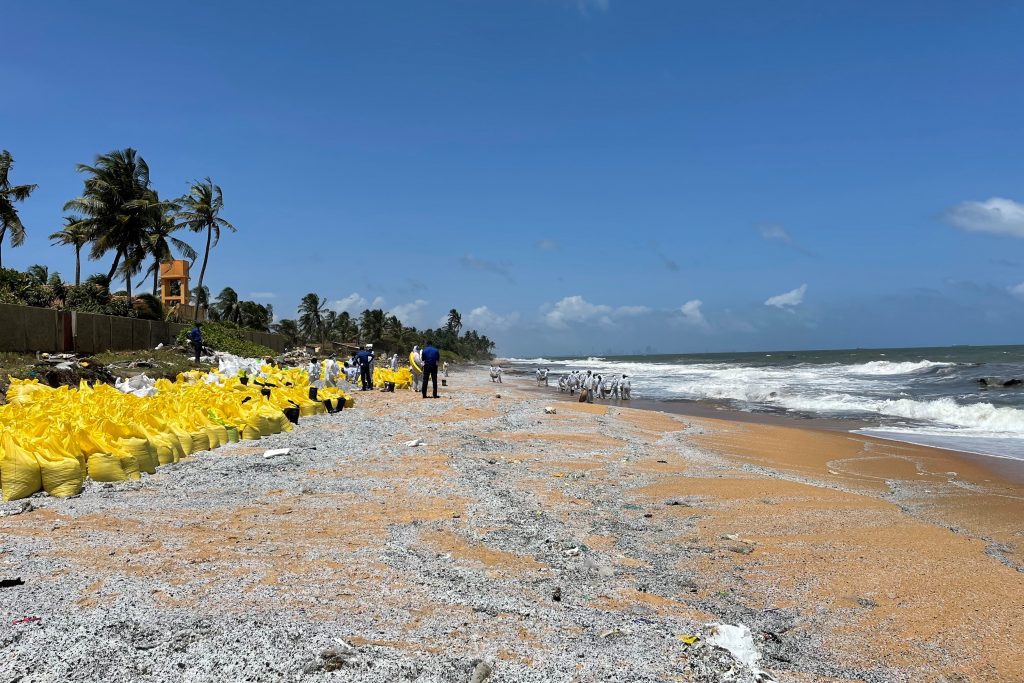
An estimated 70-75 billion pellets of preproduction plastic material, known as nurdles, spilled into the ocean and along the Sri Lankan coastline when a cargo ship fire broke out in May, 2021, threatening marine life and posing a complex clean-up challenge. (© Photo by Asha de Vos)
One of these nurdle spills, a 2020 accident near New Orleans, has since become the subject of a similar forensic investigation at WHOI. Reddy and WHOI marine chemist Bryan James say their team's work with de Vos in Sri Lanka was the inspiration for this continued research.
"To my knowledge, there's no consensus or training on what to do when a plastic spill happens," says James, who coordinated communication between WHOI and de Vos. "We want to focus our efforts in providing information that would immediately be useful to the unanswered questions responders have."
After several delays, the M/V X-Press Pearl is now scheduled to be towed out of coastal waters sometime in 2023, according to reports from the Sri Lankan government. How this spill will impact marine life and, more importantly, how marine plastic disasters are handled going forward, remains to be seen.
Even today, the WHOI team and de Vos continue to learn more about Sri Lanka's nurdles, some of which can be gleaned from a new scientific report about the contents of the M/V X-Press Pearl that are now in the water.
"I read someone in the news remark, 'a nurdle spill is a nurdle spill,'" says Reddy. "Well, those nurdles become a lot more complex when you set them on fire."
Further analysis revealed a cocktail of compounds, including trace amounts of carcinogens known as PAHs that could impact marine life. Other chemicals commonly associated with petroleum, like hopanes, proved the presence of petroleum products from the ship (possibly its fuel), now in the water and on some of the nurdles coming ashore.
"There's still concern over deciding whether this material should be considered hazardous waste," says James. "Because that then changes how you handle disposal of the material."
De Vos and her team at Oceanswell continue to send WHOI scientists new packages of nurdle samples from the island's beaches, which will give the plastics group another important data point in how these nurdles change over time.
For now, scientists like Aluwihare say this international collaboration may have already saved Sri Lankan responders time and energy in directing the clean-up.
"We don't usually value personal relationships in science, but here it was everything."
Several members of the WHOI and Sri Lankan science teams, and their partners who contributed to this work, were not mentioned in this story. This includes Collin Ward and members of the Ward Lab at WHOI, including MIT-WHOI PhD student Anna Walsh; MIT-WHOI PhD student Beckett Colson; responders with Oceanswell; members of ITOPF, an international spill response organization; and the WHOI Communications staff.
